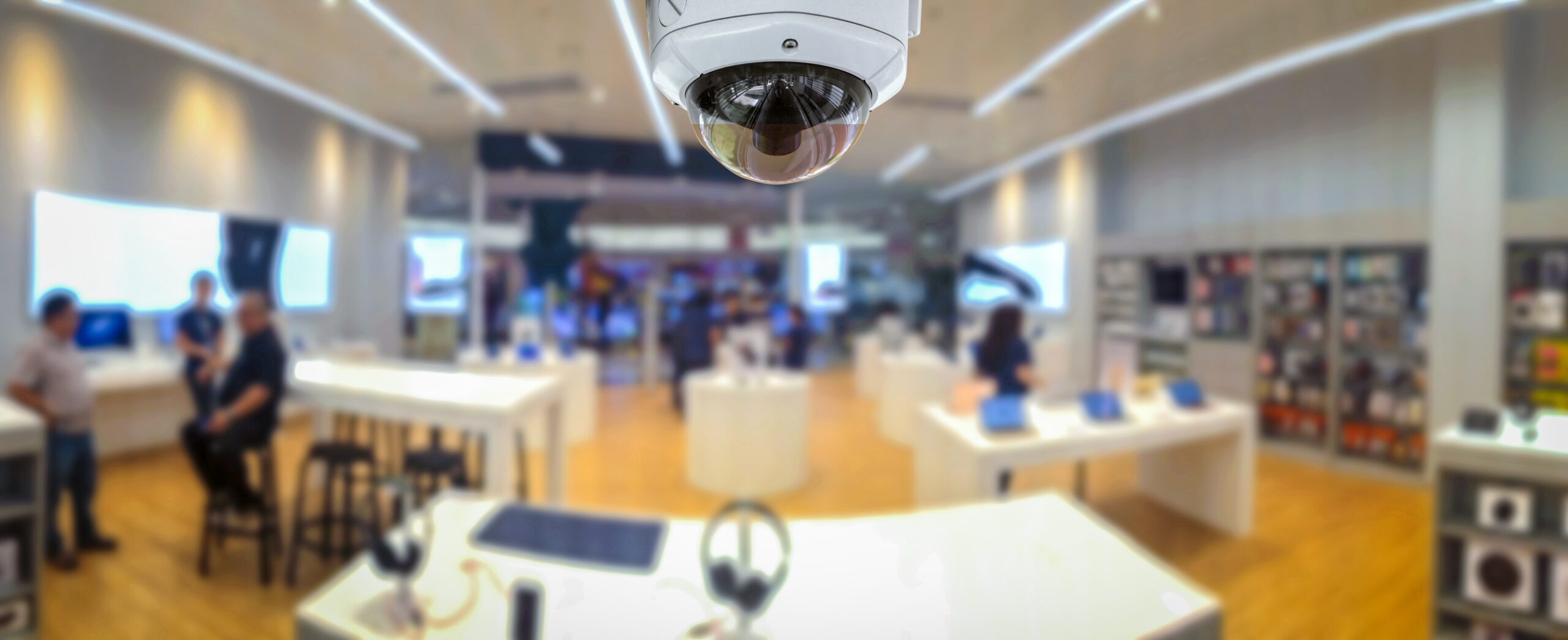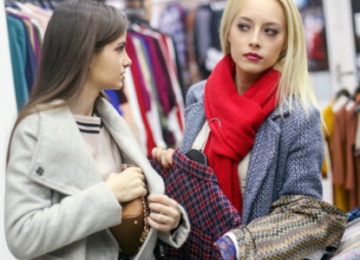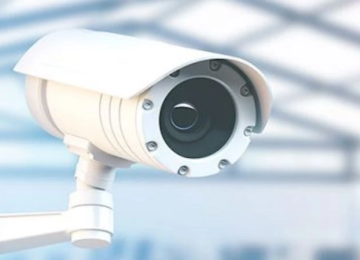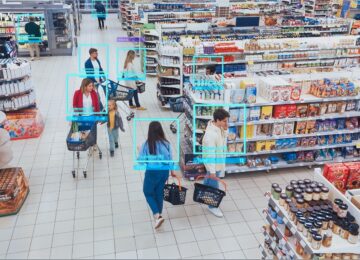Complete Guide to Video Surveillance for Retailers in 2025

Retail theft isn’t slowing down. If anything, it’s getting more strategic. Repeat offenders, organized shoplifting, and growing safety concerns are putting serious pressure on retailers in 2025.
Traditional systems, such as cameras, guards, and gates, can only go so far. They're reactive, not proactive. Worse still, they rely heavily on staff who are already overextended.
Surveillance alone isn’t enough anymore. Retailers need tools that help them see what's happening, understand patterns, and act fast, without adding more work to their teams.
This guide walks you through the evolution of video surveillance in stores, what to prioritize in your next system, and how AI is quietly changing the game for retailers looking to regain control.
Why Retailers Need Video Surveillance in 2025
Shrink isn’t just about stolen goods. It’s about lost revenue, wasted time, and unnecessary risk.
In 2025, the pressures on retail security are stacking up:
- Shoplifting accounts for about 36% of all retail shrinkage
- Employee theft contributes around 29%
- Organized retail crime may represent a smaller share of shrink (about 5%), but its impact is outsized. These groups often target high-value items, exploit system gaps, and operate across multiple store locations
Security cameras still play a role. But smart retailers are using surveillance video for more than theft prevention:
- Monitoring peak hours and customer flow
- Documenting incidents for legal or insurance purposes
- Protecting staff from aggressive encounters
Most importantly, they’re using real-time alerts to stop repeat offenders before they strike again. Because most shoplifting isn’t random, it’s recurring. Veesion data shows that regular shoppers commit 6 in 10 thefts.
This shift is also about physical security, operational efficiency, and regaining complete control over what's happening in-store.
Different Types of Video Surveillance Systems Retailers Use Today
Retailers today rely on a mix of old and new technology. Some stick with traditional setups, while others are upgrading for more visibility and control.
1. Analog CCTV (Closed-Circuit TV)
These systems record footage locally, typically onto a DVR or recorder.
They’re affordable but limited:
- No remote access
- Poor resolution and image quality
- No analytics or smart motion detection
That may be fine for basic oversight. But in today’s retail environment, it often leaves stores with blind spots and no way to act fast when something goes wrong.
2. IP Camera Systems
These are internet-connected cameras that stream and store high-definition video footage.
They:
- Allow for remote monitoring
- Easier to scale
- Can integrate with cloud and software tools
That makes them ideal for retail teams that want reliable access to real-time video, whether they’re on-site or remote. They support advanced features like smart motion detection and analytics, without the hardware constraints of older systems.
3. Modern, AI-Enabled Surveillance
These systems easily connect to your existing network, minimizing disruption and installation time.
You get:
- Real-time alerts on suspicious behavior
- Integration with apps for faster review
- Detection of gestures tied to theft
Retailers with multiple locations often benefit from centralized tools that enable them to monitor and compare their stores. But even single-store owners are seeing returns from smarter video setups that bring peace of mind and help safeguard their business.
Key Features to Look for in a Retail Video Surveillance System
Not all video systems are built for busy retail teams. Look for advanced features like gesture recognition and customizable alert zones that adapt to your store's layout. Customizable alert zones allow you to focus surveillance on high-risk areas, such as entrances or aisles with valuable merchandise, ensuring you're only alerted to relevant incidents.
These features make your day easier, not harder:
- Real-time alerts: Catch suspicious gestures when they happen, not after the fact.
- Easy integration: Should work with the cameras you already have.
- Remote monitoring: Stay connected, even when you're not in the store.
- Customizable settings: Every store is different. You should be able to adjust detection sensitivity, alert types, and what gets flagged.
- Privacy built in: No facial recognition or customer data needed.
- Role-based access: Different permissions are assigned to owners, managers, and staff.
And just as important: low false alarms. If the system flags everything, your team will stop paying attention. Smart detection that filters out normal behavior saves time and keeps alerts meaningful.
With a wide array of tools now available, retailers can find cost-effective solutions that suit their needs, whether it’s a single location or a chain with tens of thousands of square feet to cover.
How AI and Cloud Storage Are Changing Surveillance Systems
Many AI video surveillance systems still rely on facial recognition. Veesion takes a different approach by training its AI on movements instead. This distinction is important, especially for privacy-conscious retailers.
Because it means:
- No biometric data is stored or analyzed
- Suspicious actions, not appearance, trigger alerts
- Systems stay compliant with privacy regulations
Veesion detects gestures linked to shoplifting, such as hiding items in a bag, slipping products under clothing, or shelf sweeping. These gestures are often repeated behaviors rather than isolated incidents.
Cloud storage adds another layer of efficiency and control. Retailers no longer need to worry about physical servers filling up or losing old footage due to auto-deletion. With cloud-based systems, storage scales with your needs and ensures easy access to recorded footage when it matters most.
Pairing AI with cloud storage gives retailers a better way to:
- Search and review incidents across days or store locations
- Share video clips quickly with local teams or law enforcement
- Benchmark activity over time
- Analyze theft patterns and operational trends
- Make smarter decisions based on real video data
These tools support staff by streamlining workflows, reducing manual review time, and delivering meaningful insights that improve store performance.
Cost, ROI, and Operational Considerations for Video Surveillance
Video surveillance in stores doesn’t have to be a budget killer. In fact, the right setup should save you money.
Typical costs to expect:
- Hardware (if new cameras or servers are needed)
- Software licenses or subscriptions
- Installation and configuration
- Training (initial onboarding and periodic refreshers)
But modern systems, especially ones that use your existing infrastructure, can deliver fast ROI by:
- Identifying repeat offenders more effectively (60% of offenders caught through Veesion are repeat shoplifters)
- Reducing staff time spent reviewing recorded footage
- Avoiding the need for more guards or third-party services
Case in point: Edfury's Store in New York
Edfury's store in New York City faced significant losses due to shoplifting, amounting to up to $40,000 annually. After implementing Veesion's AI-powered surveillance system, the store experienced a substantial reduction in theft incidents. The system provided real-time alerts, enabling security personnel to respond promptly and prevent losses. This proactive approach not only safeguarded inventory but also optimized staff efficiency.
How to Choose and Roll Out a Retail Video Surveillance System
A new system is only as good as your rollout. Here’s what to consider.
Step 1: Assess Your Store Layout and Risk Points
Walk your floor. Identify blind spots, high-theft areas, and existing camera coverage. You may need to increase wide area coverage without compromising detail.
Step 2: Check Your Tech
Make sure your video surveillance systems for retail supports Real-Time Streaming Protocol (RTSP). You’ll also need an internet connection and space for a small, secure server.
Step 3: Align Your Team
Surveillance doesn’t work in isolation. Train your team to recognize alerts, use the app, and respond without confrontation. Make sure to grant access to the right people, based on their roles.
Step 4: Start With a Pilot
Test the system in one or two locations. Track how often it catches incidents, and how your staff responds. If it works, expand. This approach strikes a balance between safety and practical deployment.
Step 5: Customize Your Setup
Work with your provider (or Veesion’s Customer Success Manager team) to tailor alerts. Not every gesture matters in every store. You control what gets flagged. It’s this flexibility that drives loss prevention across retail locations.
Smarter Systems, Simpler Protection
Retail video surveillance in stores in 2025 isn’t about watching more screens. It’s about making smarter decisions with the tools you already have.
AI-powered systems like Veesion help retailers regain visibility, respond more quickly, and reduce recurring theft, without requiring overhauls to your hardware or overwhelming your team.
You don’t need to choose between safety and simplicity. You can have both.
Want to see how real-time, gesture-based alerts could work in your store? Discover how AI-powered video surveillance works in retail and schedule a demo today.
It’s one way more organizations are regaining control, store by store.
The most popular
Related news
Discover what Veesion can do for you. Do you have one or more stores?
Our team will contact you within 48 hours





